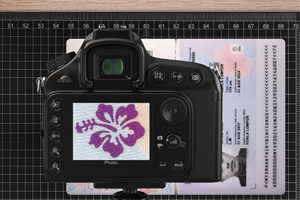A look behind the scene at Documentchecker
Ever wondered how the Keesing Documentchecker Database is built? Let’s take a closer look and see how Documentchecker works behind the scenes. From the acquisition process of the document to the moment the document is digitized and added into Documentchecker…

Document acquisition
Our team of document acquirers has accumulated extensive knowledge of ID documents and banknotes. They are dedicated to ensuring that specimen documents can be submitted in the most straightforward and secure manner.
“We establish professional and long lasting relationships with governmental institutions to make sure we have the most up to date database. This way our clients and users can verify the latest ID documents and banknotes with ease” -Document acquirer.

Document examination
Once the documents are in, all security features are located and examined. Several photographs are taken in whitelight, UV light and infrared light. Afterwards the images are being treated to omit colour errors etc.
“We try to process as many ID documents and banknotes per week as possible. We have a team of graphic designers, editors and specialists at our disposal who can process one ID document or banknote per day” – Studio manager.

The Documentchecker database
Now all security features have been photographed and digitized, it’s time to upload the images to the Documentchecker database.
“We translate all the descriptions into eight different languages. It takes me about an hour to upload a finished new document in Documentchecker. Each newly added document is then returned to the document acquirers.” – Product owner Documentchecker

Returning or storing the document
After we are done examining the document two things can happen. The document can be stored in our safe or it is returned to the source we received it from. Some documents are specimen documents which have to be returned to various governmental institutions. Only with their permission we get to keep the documents.

